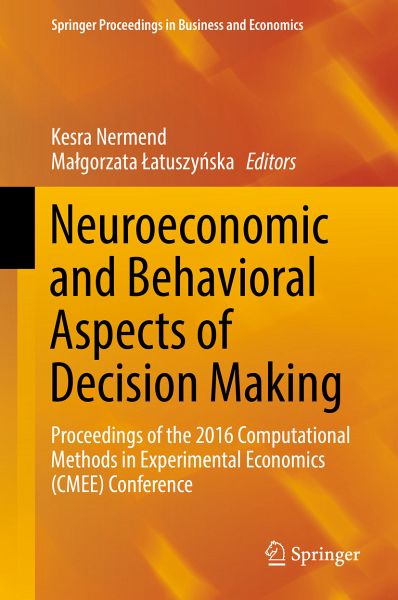
Neuroeconomic and Behavioral Aspects of Decision Making (eBook, PDF)
Proceedings of the 2016 Computational Methods in Experimental Economics (CMEE) Conference
Redaktion: Nermend, Kesra; Latuszynska, Malgorzata
Versandkostenfrei!
Sofort per Download lieferbar
160,95 €
inkl. MwSt.
Weitere Ausgaben:

PAYBACK Punkte
80 °P sammeln!
Explores experimental economic analysis in behavioral neuroeconomics
Features papers from the 2016 Computational Methods in Experimental Economics (CMEE) conference
Features a variety of computational methods used in neuroeconomics
Dieser Download kann aus rechtlichen Gründen nur mit Rechnungsadresse in A, B, BG, CY, CZ, D, DK, EW, E, FIN, F, GR, HR, H, IRL, I, LT, L, LR, M, NL, PL, P, R, S, SLO, SK ausgeliefert werden.












